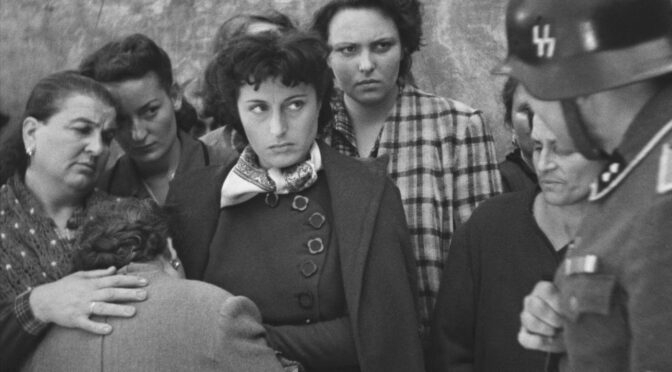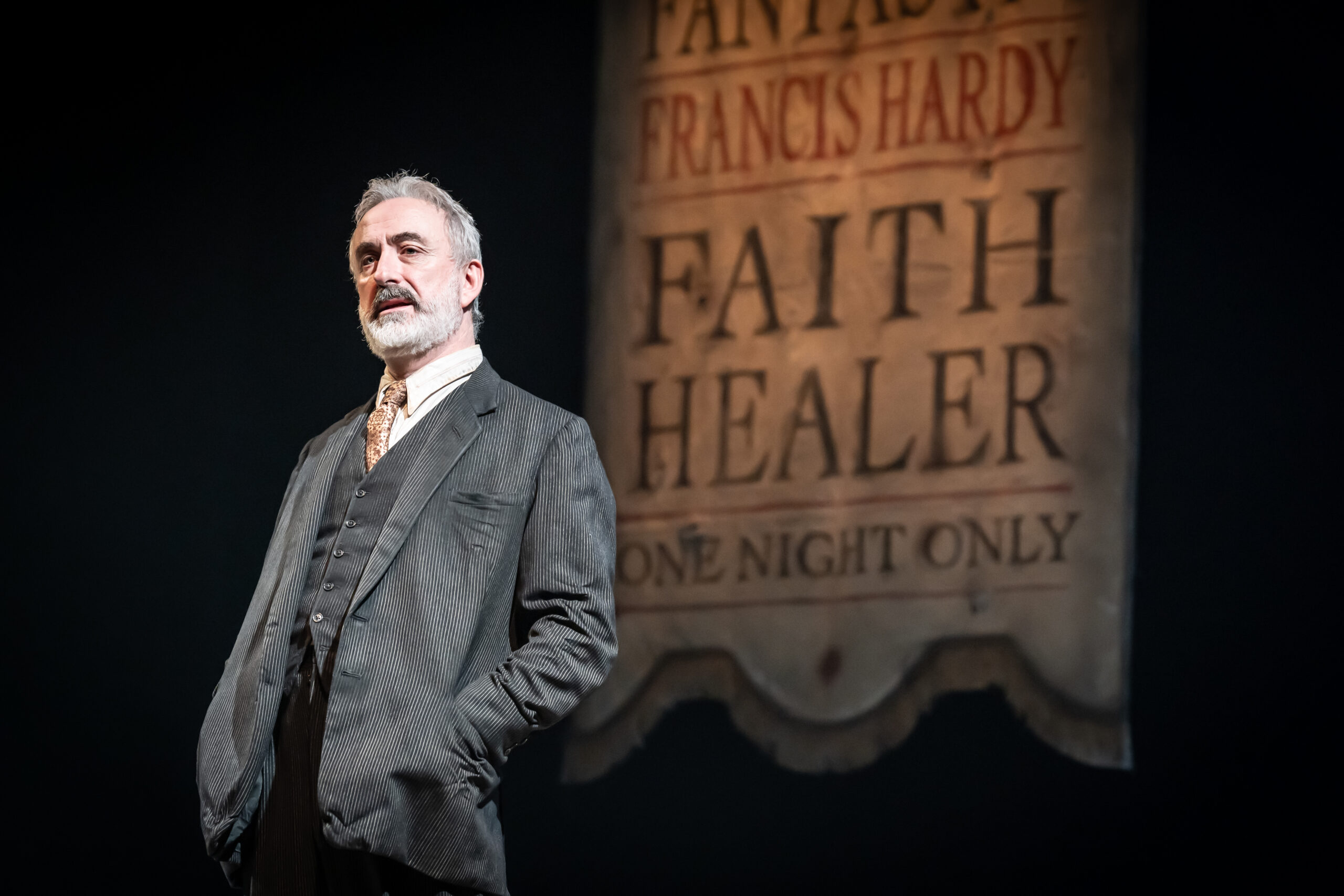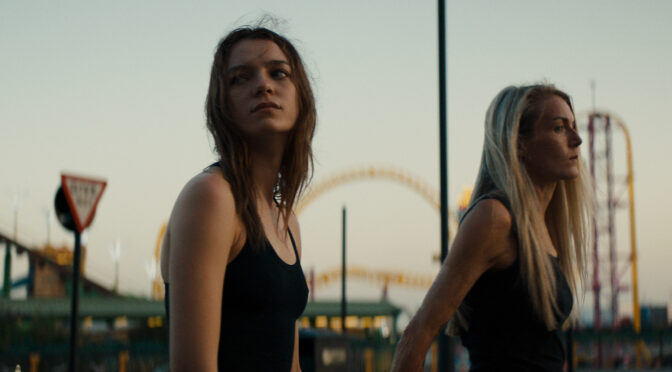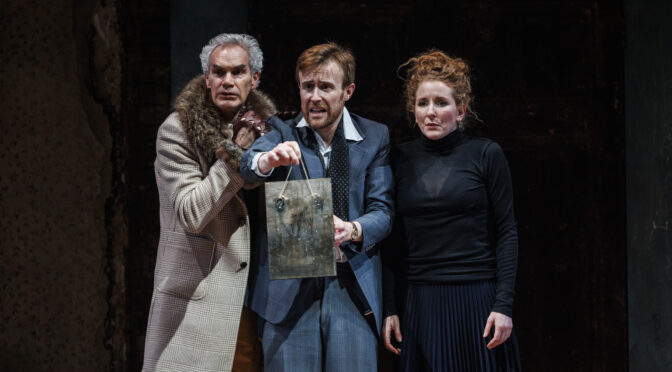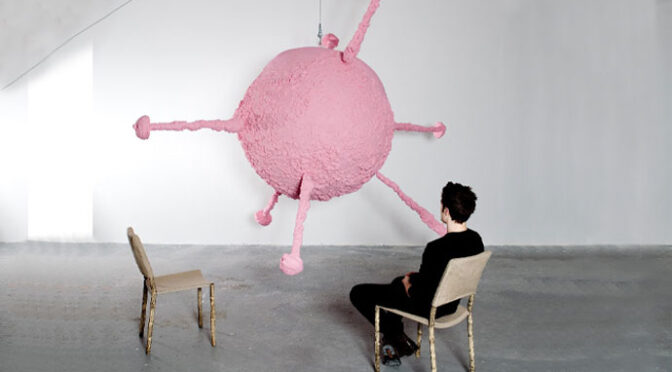Doors open for the audience. As we walk in, we are welcomed by an almost naked body lying on stage, no set but a microphone, a laptop, and a white wooden cube. There is a video playing on the background – a woman casually sniffing what appears to be a line of coke – but the lights and attention are on the body, neon straps covering only the smallest amount of skin. With this already striking start, Katy Baird welcomes us into her world.
Katy Baird is an artist and producer whose work takes different forms of live art – those could be theatre, cabaret, film, installation, or participatory performances. She has performed at different venues around the UK and Europe, including clubs or parties. Inspired by the messiness of life and her own surroundings, Baird creates unapologetic performances exploring class, gender, and sexuality. ‘My practice is centred around a desire to create a shared space that can be both welcoming and radical’, Baird says. Using her body, she questions the audience on what is acceptable on stage.
Get Off started as a residency commissioned by the Arts Council England, in which Baird aims to create a live performance that answers questions such as ‘What gives us pleasure?’ and ‘How much is too much?’. Baird worked with director Kim Noble, who helped her push boundaries to reach new levels within her work.
As Get Off starts, you immediately like Baird. Her connection to the audience is key, and leaves us wondering – is she trying to make us spectators uncomfortable, or is she creating a space for intimacy between the stage and the stalls of the Battersea Arts Centre? The show is full of these contradictions. A mix of fun and disgust, Get Off is not for everyone, and not for every moment. You either have the stomach for it, or Katy will shove you right in without permission.
Throughout the hour-long performance, Baird stands on stage talking to the audience, sharing her secrets. A video plays on the background for most of the show, screening her in a way more intimate setting – resting, playing music, taking drugs, even going to the toilet and taking a dump in front of the wide-eyed audience. There are a few moments of interaction between both Bairds that leave us wondering if we are really seeing her – is it her on the screen, intimate and shocking, or is the ‘live Katy’, the one with the uncomfortable questions, the real one?
Baird talks about trauma and the past, mentioning her life coach and the ways she is trying to find connection. She talks about surviving the monotony of everyday life and finding her space in the world. She does that in a way not quite explored before, by choosing a welcoming performance with a relaxed atmosphere in which anything can happen.
As hard as creating something ground-breaking can be nowadays, Katy fills the space with her presence and personality and wildly succeeds in not leaving the audience unmoved. ‘I want the audience to be seen and feel part of something’, she says on an interview by Stuart Wilson for the To Do List website. And that relationship to the audience is what defines Get Off as a success. If ready for all they have coming to them, Get Off will make its audience squirm, cringe, and laugh out loud like they never have before.
Review by Eva Mateos Rodriguez
Eva is an eclectic artist specialising in acting, writing and song writing. She has been part of several performances, responses and exhibitions, and is now a student of the MA Creative Writing at Birkbeck University.
Read Eva’s latest Review: Sacha Polak’s ‘Silver Haze’ is a dizzying roller-coaster of emotions and experiences – Releasing 29th March in UK and Irish cinemas – Abundant Art
Featured Image – Katy Baird in Get Off, credit JMA Photography
Get Off at Battersea Arts Centre
Date: 8 – 25 May
Booking Link: bac.org.uk/get-off
Time: 7:30pm & 8.30pm/Age guidance: 18+/Running time: 75 mins (no interval)
Access: Audio described performances 22 & 24 May. Description by Dot Alma. All performances of Get Off are Relaxed. At BAC, this means you can move or make noise if you need to. You can go in and out of the performance space.
Co-produced by Katy Baird and Battersea Arts Centre
Co-directed by Katy Baird and Kim Noble
Co-commissioned by Battersea Arts Centre, CAMPO, and Transform, with further support from Artsadmin, Tramway, Cambridge Junction, Horizon and Old Diorama Arts Centre. Using public funding through the National Lottery from Arts Council England.
ABOUT KATY BAIRD
Katy Baird is an artist who frequently finds herself in bizarre situations of her own making. Her practice is centred around a desire to create a shared space that can be both welcoming and radical. She has performed at Live Art festivals and venues across the UK and internationally as well as squat parties, clubs and raves. She has received commissions from Battersea Arts Centre, Wellcome Trust, The Yard, Camden People’s Theatre and Duckie amongst others. Since 2016 she has been artist in residence at queer club night Knickerbocker.
Katy proudly identifies as an ‘old, queer, fat, femme deviant’ and is currently based in Hastings, East Sussex. As a curator she founded and produced Steakhouse Live, a DIY platform in London for radical performance practices and is artistic director of Home Live Art. Katy has worked as an independent producer at Fierce Festival and Manchester International Festival. From 2012-2017 she worked as Coordinator at the Live Art Development Agency, London. www.katybaird.com


